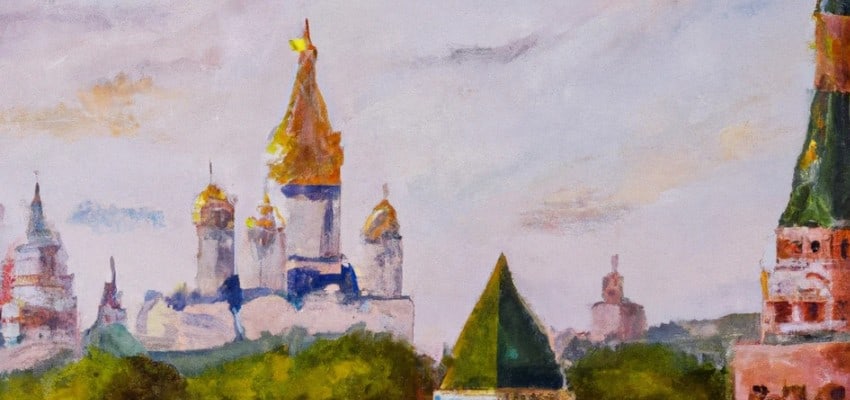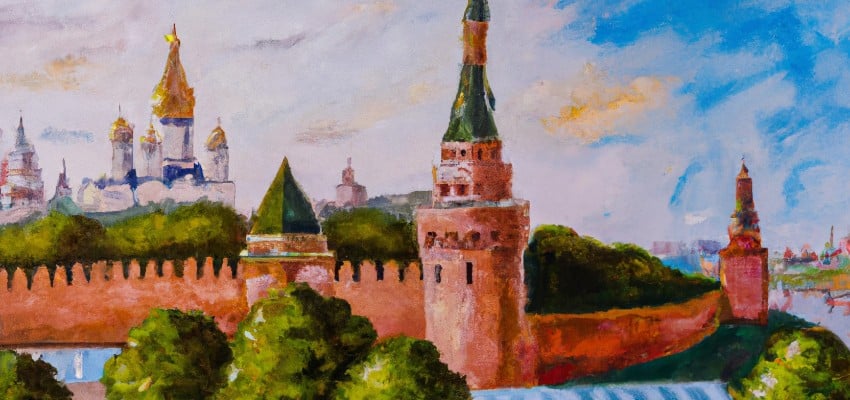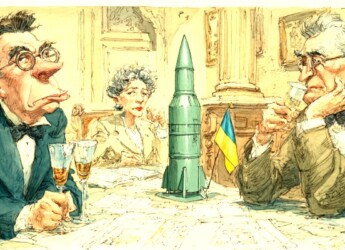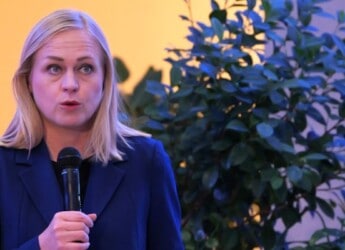|
|
Content Assessment: Rhetoric or Reality? Ukraine Conflict Assessments in Maps (November 1-6 , 2022)
Information - 94%
Insight - 93%
Relevance - 91%
Objectivity - 94%
Authority - 93%
93%
Excellent
A short percentage-based assessment of the qualitative benefit of the post highlighting the recent Ukraine conflict assessments in maps from the Institute for the Study of War.
Editor’s Note: One of the most accurate and detailed sources for ongoing updates on the Ukraine crisis is the Ukraine Conflict Update from the Institute for the Study of War. The Institute for the Study of War (ISW) is a 501(c)(3) organization and produces strictly non-partisan, non-ideological, fact-based research. ISW seeks to promote an informed understanding of war and military affairs through comprehensive, independent, and accessible open-source research and analysis. ISW’s research is made available to the general public, military practitioners, policymakers, and media members. Providing a daily synthesis of key events related to the Russian aggression against Ukraine, ISW updates may benefit cybersecurity, information governance, and legal discovery professionals as they follow the business, information technology, and legal trends and trajectories impacted by and stemming from the current Ukraine conflict.
Assessment and Maps*
Ukraine Conflict Assessments – An Overview in Maps
- Institute for the Study of War (ISW), Russia Team
- Critical Threats Project (CTP), American Enterprise Institute
General Assessment Background Info
- ISW systematically publishes Russian campaign assessments that include maps highlighting the assessed control of terrain in Ukraine and main Russian maneuver axes.
- These maps augment daily synthetic products that cover key events related to renewed Russian aggression against Ukraine.
The Russian Offensive Campaign Assessments
- November 6, 2022
- By Kateryna Stepanenko and Mason Clark
Key Development
- Key Kremlin officials began collectively de-escalating their rhetoric regarding the use of nuclear weapons in early November. The Russian Ministry of Foreign Affairs (MFA) released a statement on “the prevention of nuclear war” on November 2, stating that Russia “is strictly and consistently guided by the postulate of the inadmissibility of a nuclear war in which there can be no winners, and which must never be unleashed.
Key Takeaways
- Wagner Group financier Yevgeny Prigozhin confirmed on November 6 that the Wagner Group is creating training and management centers for local “people’s militias” in Kursk and Belgorod oblasts.
- Russian milbloggers amplified reports that the Russian 155th Naval Infantry Brigade sustained severe losses during the recent offensive push towards Pavlivka, Donetsk Oblast.
- Russian sources claimed that Ukrainian forces continued counteroffensive operations in the direction of Svatove and Kreminna.
- Russian opposition sources reported that Ukrainian shelling near Makiivka, Luhansk Oblast may have killed up to 500 Russian mobilized personnel in one day.
- Russian forces continued establishing defensive positions on the west (right) bank of the Dnipro River in Kherson Oblast. Ukrainian forces continued their interdiction campaign against Russian logistics in Kherson Oblast.
- Russian forces conducted ground attacks near Bakhmut, Avdiivka, and Vuhledar. Russian sources claimed that Russian forces broke through Ukrainian defenses near Bakhmut, made marginal gains south of Avdiivka, and remained impaled near Pavliivka in western Donetsk Oblast.
- Ukrainian personnel repaired two external power lines to the Zaporizhzhia Nuclear Power Plant (ZNPP) on November 5, resuming the supply of electricity to the ZNPP after shelling deenergized the facility on November 3.
- Russian occupation officials continued to cite the threat of a Ukrainian strike on the Kakhovka Hydroelectric Power Station to justify the continued forced relocation of civilians in Kherson Oblast.
- Russian occupation officials continued to forcibly transfer Ukrainian children from occupied Ukraine to Russia under the guise of “vacation” schemes.
- Russian forces continued to struggle with domestic resistance to and poor provisioning of ongoing mobilization efforts.
- November 5, 2022
- By Karolina Hird, Kateryna Stepanenko, Riley Bailey, Angela Howard, and Mason Clark
Key Development
- Wagner Group financier Yevgeny Prigozhin seeks to obfuscate his efforts to strengthen his independent power base with an appeal to the concept of Russia’s historic unity.
Key Takeaways
- Wagner Group financier Yevheniy Prigozhin seeks to obfuscate his efforts to strengthen his independent power base with an appeal to the concept of Russia’s historic unity.
- Iranian Foreign Minister Hossein Amir-Abdollahian confirmed that Iran began providing Russia drones before February 24, but strangely denied that Russian forces have used them in combat.
- DNR military commander Aleksandr Khodakovsky claimed that Russian friendly fire may have caused up to 60% of total Russian losses since mid-May.
- Ukrainian troops reportedly continued counteroffensives along the Svatove-Kreminna line.
- Russian forces continued to set up defensive positions along the Dnipro River.
- Ukrainian forces continued to target Russian logistics and transportation in Kherson Oblast.
- Russian forces continued to attack around Bakhmut and claimed unspecified advances.
- Russian forces continued unsuccessful offensive operations in the Avdiivka-Donetsk City area and in western Donetsk.
- Continued poor conditions for mobilized soldiers catalyzed a large-scale protest in Kazan.
- Unknown actors reportedly attempted to assassinate high-profile Donetsk People’s Republic (DNR) Supreme Court Judge Aleksandr Nikulin.
- Russia continues to deploy personnel to staff administrative positions in occupied areas.
- Russian forces continued forced evacuations in Kherson Oblast. Over 80% of Kherson residents reportedly have evacuated.
- November 4, 2022
- By Kateryna Stepanenko, Riley Bailey, Madison Williams, Yekaterina Klepanchuk, and Frederick W. Kagan
Key Development
- The Russian military is likely trying to use mobilized personnel to restart the Donetsk offensive but will likely still fail to achieve operationally significant gains.
Key Takeaways
- The Russian military is likely trying to use mobilized personnel to restart its Donetsk offensive but will likely fail to achieve operationally significant gains.
- Russian forces are setting conditions for an orderly withdrawal from the west bank of the Dnipro River to avoid a rout in Kherson Oblast.
- President Vladimir Putin is likely setting conditions to continue mobilization covertly despite claims that partial mobilization produced sufficient forces.
- Russia’s costly force generation measures will likely continue to weigh on the Russian economy and generate social tensions.
- Iran is likely exploiting Russian reliance on Iranian-made weapon systems to request Russian assistance with its nuclear program.
- Russian forces may be deploying extreme measures against deserting personnel in an attempt to respond to severe morale issues.
- Russian sources claimed that Ukrainian forces continued counteroffensive operations in the direction of Kreminna and Svatove.
- Russian forces continued to prepare existing and new defensive lines in Kherson Oblast.
- Russian forces continued to conduct offensive operations around Bakhmut, Avdiivka, and Donetsk City.
- Russian forces continued forced evacuation measures in Kherson Oblast.
- Russian and occupation officials continued to set measures for the forced deportation of Ukrainian children to the Russian Federation.
- November 3, 2022
- By Kateryna Stepanenko, Riley Bailey, Grace Mappes, Yekaterina Klepanchuk, and Frederick W. Kagan
Key Development
- Russian forces are continuing to withdraw some elements from northwestern Kherson Oblast, but it is still unclear if Russian forces will fight for Kherson City.
Key Takeaways
- It is still unclear whether Russian forces will defend Kherson City despite the ongoing withdrawal of some Russian elements from northwestern Kherson Oblast.
- Russian forces prematurely deployed newly mobilized personnel to offensive operations in western Donetsk Oblast in the pursuit of minimal and operationally insignificant territorial gains.
- Russian outlets continued to publish contradictory and confusing reports about the dismissal of Colonel General Alexander Lapin from the position of CMD commander or commander of the Russian “central” forces.
- Russian authorities may be setting conditions to imminently transfer the Zaporizhzhia Nuclear Power Plant to the Russian power grid.
- Russian sources claimed that Ukrainian forces continued to conduct counteroffensive operations in the direction of Kreminna and Svatove.
- Russian forces continued offensive operations around Bakhmut, Avdiivka, and Donetsk City.
- The Russian military continues to face pronounced issues in the supply of critical military equipment.
- The Russian Ministry of Defense is likely continuing mobilization efforts covertly.
- Russian occupation officials continued forced evacuations in Kherson Oblast.
- November 2, 2022
- By Kateryna Stepanenko, Riley Bailey, Karolina Hird, Grace Mappes, Madison Williams, Yekaterina Klepanchuk, and Frederick W. Kagan
Key Development
- Russian President Vladimir Putin continues to reject the idea of Ukrainian sovereignty in a way that is fundamentally incompatible with serious negotiations.
Key Takeaways
- Russian force generation efforts combined with Western sanctions are having long-term damaging effects on the Russian economy, as ISW has previously forecasted.
- Russian President Vladimir Putin’s calls for a competitive Russian military industry are divorced from the reality of Russian supply chain and defense industrial base issues.
- Russian officials announced that occupation authorities began integrating the Zaporizhzhia Nuclear Power Plant (ZNPP) into Russian jurisdiction.
- Russian and Belarusian officials continue to perpetuate the long-standing information operation that Belarus will enter the war in Ukraine on behalf of Russia, but Belarus’ entry into the war remains highly unlikely, as ISW has previously assessed.
- Russian sources claimed that Ukrainian forces continued to conduct counteroffensive operations in the directions of Svatove and Kreminna, and Russian forces conducted offensive operations to constrain Ukrainian forces.
- Russian forces continued defensive operations along the Dnipro River while Ukrainian forces continued their interdiction campaign.
- Russian forces continued to conduct ground assaults near Bakhmut and Donetsk City.
- Russian forces continued mobilization efforts and advertising for volunteer battalions while struggling with low morale.
- Russian occupation authorities continued to forcibly relocate Kherson Oblast residents, nationalize Ukrainian enterprises in occupied territory, and forcibly deport Ukrainian children to Russia.
- November 1, 2022
- By Kateryna Stepanenko, Riley Bailey, Karolina Hird, Grace Mappes, Madison Williams, Yekaterina Klepanchuk, and Frederick W. Kagan
Key Development
- Iran plans to send more combat drones and new ballistic missile systems to Russia for use in Ukraine, likely further strengthening Russia’s reliance on Iranian-made weapon systems.
Key Takeaways
- Planned Iranian shipments of drones and ballistic missiles to Russia will likely further strengthen Russian reliance on Iran and Iranian-made weapons systems.
- The Russian MoD started its semi-annual fall conscription cycle despite reports of Russian authorities covertly continuing mobilization measures.
- Commander of the 8th Combined Arms Army of the Southern Military District (SMD), Lieutenant-General Andrey Mordvichev, reportedly replaced Colonel-General Alexander Lapin as commander of the Central Military District (CMD).
- Wagner Group financier Yevgeniy Prigozhin is likely attempting to address critiques against his parallel military structures following Lapin’s reported dismissal.
- Russian sources claimed that Ukrainian forces continued to conduct counteroffensive operations in the directions of Svatove and Kreminna.
- Russian forces continued defensive preparations while Ukrainian forces conducted counteroffensive operations in Kherson Oblast.
- Russian forces continued to conduct offensive operations around Bakhmut and around Donetsk City.
- Russian forces continued to strengthen Russian control over the Zaporizhzhia Nuclear Power Plant.
- Russian military structures are reportedly expanding training capabilities.
- Russian occupation officials continued to set conditions for the long-term and permanent relocation of residents from the east bank of the Dnipro River in Kherson Oblast.
We do not report in detail on Russian war crimes because those activities are well-covered in Western media and do not directly affect the military operations we are assessing and forecasting. We will continue to evaluate and report on the effects of these criminal activities on the Ukrainian military and population and specifically on combat in Ukrainian urban areas. We utterly condemn these Russian violations of the laws of armed conflict, Geneva Conventions, and humanity even though we do not describe them in these reports.
Chronology of Maps from November 1-6, 2022 – Mouseover to Scroll
Ukraine Conflict Maps - 110122-110622See the Institute for the Study of War Interactive Map of the Russian Invasion
Read the latest Ukraine Conflict updates from the Institute for the Study of War
* Shared with direct express permission from the Institute for the Study of War (ISW).
About the Institute for the Study of War Research Methodology
ISW’s research methodology relies on both primary and secondary sources, enabling researchers to develop a comprehensive understanding of the situation on the ground. In order to analyze military and political developments in any given area, ISW’s research analysts must wholly understand the systems of enemy and friendly forces. They must also understand the population demographics, physical terrain, politics, and history of that area. This lays the analytical foundation for understanding the reasons for particular developments and fulfilling their assigned research objectives. ISW analysts also spend time in places like Iraq, Afghanistan, and elsewhere in order to gain a better understanding of the security and political situation and to evaluate the implementation of current strategies and policies. Our researchers compile data and analyze trends, producing a granular analysis of developments in areas of research, producing an accurate, high-resolution, timely, and thorough picture of the situation. ISW’s research methodology guarantees its success and commitment to improving the nation’s ability to execute military operations, achieve strategic objectives, and respond to emerging problems that may require the use of American military power.
About the Institute for the Study of War
The Institute for the Study of War advances an informed understanding of military affairs through reliable research, trusted analysis, and innovative education. We are committed to improving the nation’s ability to execute military operations and respond to emerging threats in order to achieve U.S. strategic objectives. ISW is a non-partisan, non-profit, public policy research organization.
Learn more, get involved, and contribute today.
Additional Reading
- [Annual Update] International Cyber Law in Practice: Interactive Toolkit
- Data Embassies: Sovereignty, Security, and Continuity for Nation-States
Source: ComplexDiscovery


























